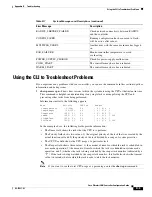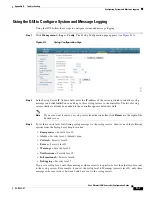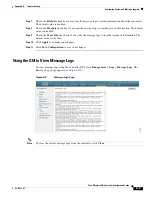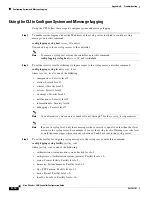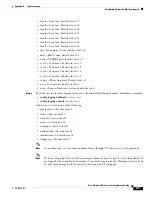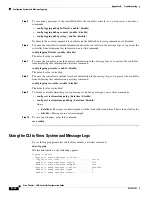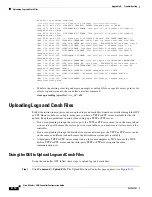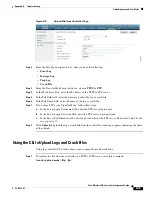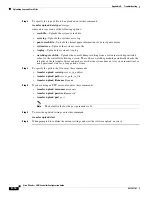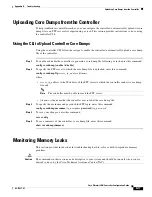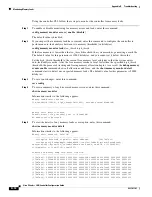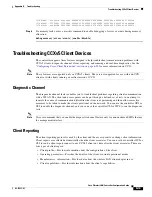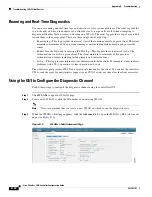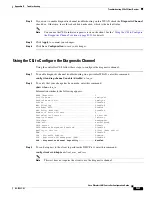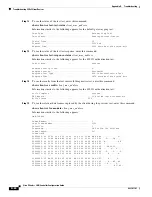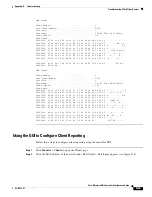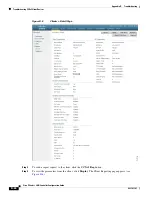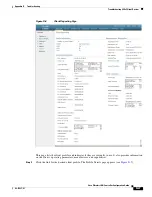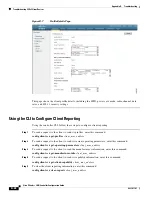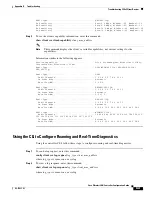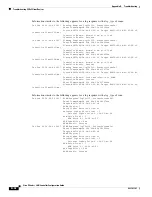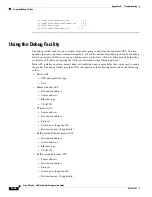
D-19
Cisco Wireless LAN Controller Configuration Guide
OL-17037-01
Appendix D Troubleshooting
Troubleshooting CCXv5 Client Devices
(179a7be0): 0000001a 00000089 00000000 00000000 000000d8 00000000 00000000 17222194
(179a7c00): 1722246c 1722246c 00000000 00000000 00000000 00000000 00000000 ceeff00d
(179a7c20): readf00d 00000080 00000000 00000000 179a7b78 00000000 1175608c 00000078
Step 6
If a memory leak occurs, enter this command to enable debugging of errors or events during memory
allocation:
debug memory
{
errors
|
events
} {
enable
|
disable
}
Troubleshooting CCXv5 Client Devices
The controller supports three features designed to help troubleshoot communication problems with
CCXv5 clients: diagnostic channel, client reporting, and roaming and real-time diagnostics. See the
“Configuring Cisco Client Extensions” section on page 6-39
for more information on CCX.
Note
These features are supported only on CCXv5 clients. They are not supported for use with non-CCX
clients or with clients running an earlier version of CCX.
Diagnostic Channel
The diagnostic channel feature enables you to troubleshoot problems regarding client communication
with a WLAN. The client and access points can be put through a defined set of tests in an attempt to
identify the cause of communication difficulties the client is experiencing and then allow corrective
measures to be taken to make the client operational on the network. You can use the controller GUI or
CLI to enable the diagnostic channel, and you can use the controller CLI or WCS to run the diagnostic
tests.
Note
Cisco recommends that you enable the diagnostic channel feature only for non-anchored SSIDs that use
the management interface.
Client Reporting
The client reporting protocol is used by the client and the access point to exchange client information.
Client reports are collected automatically when the client associates. You can use the controller GUI or
CLI to send a client report request to any CCXv5 client any time after the client associates. There are
four types of client reports:
•
Client profile—Provides information about the configuration of the client.
•
Operating parameters—Provides the details of the client’s current operational modes.
•
Manufacturers’ information—Provides data about the wireless LAN client adapter in use.
•
Client capabilities—Provides information about the client’s capabilities.

